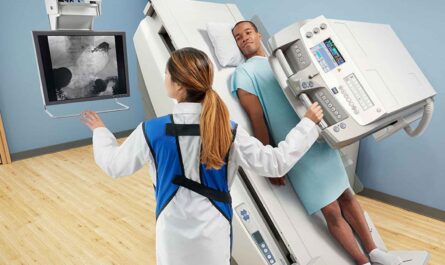Cell Therapy Production: Key Steps in Manufacturing Advanced Therapies
One of the critical parts of bringing cell therapies to market is establishing robust and standardized manufacturing processes. Producing advanced therapies at scale involves numerous steps from cell sourcing to final product formulation and packaging. Here are some of the key stages in cell therapy manufacturing:
Cell Sourcing and Isolation
The starting point for most cell therapy is obtaining the appropriate cell types, whether they come from the patient themselves or an allogeneic donor source. Autologous therapies require isolating cells like T-cells, dendritic cells or stem cells directly from the patient. Allogeneic therapies use cell banks created from multiple healthy donors. In either case, high quality, viable cells are needed to create the final therapeutic product.
Cell Processing and Manipulation
Once obtained, cells often undergo various processing steps to induce certain effects or modify them in other ways. T-cells may be activated and engineered to target specific antigens for cancer immunotherapies. Stem cells could be differentiated into other cell types. Gene therapies may involve inserting, modifying or knocking out genetic material in the cells. Robust and reproducible processes are critical for cell manipulation.
Cell Expansion and Activation
To produce sufficient cells for therapeutic dosing, harvested cells frequently need to be expanded in bioreactors through multiple passages. Growth factors, cytokines and other nutrients are precisely controlled. For some therapies, this expansion phase may also involve activating the cells so they take on desired therapeutic properties once infused in the patient. Ensuring consistent cell expansion and activation is an important manufacturing consideration.
Formulation and Fill-Finish
Near the end of production, expanded and manipulated cells are formulated into the final drug product solution that will be given to patients. Additional components like cryoprotectants may be needed depending on the therapy. The formulated drug is then aseptically filled into containers, sometimes under specific environmental conditions, and labeled for shipping and administration by healthcare providers.
Quality Control Testing
Stringent quality testing occurs throughout and at the conclusion of the manufacturing process. Parameters evaluated can include testing for identity, purity, potency, viability, sterility and more. Release assays demonstrate that final product specifications are met before the therapy is made available for patient use. Comprehensive quality control helps ensure maximum safety and efficacy.
Establishing Standards for Cell Therapy Manufacturing
With dozens of cell therapies now in clinical trials and several approved products on the market, attention is growing around establishing consistent manufacturing standards for advanced therapies. Regulatory agencies are working to provide appropriate guidance to facilitate further development and scalable production of these novel treatments. Here are a few key areas receiving focus:
Current Good Manufacturing Practices
Like other medicinal products, cell and gene therapies must adhere to Current Good Manufacturing Practices (CGMP). However, regulations need refinement to properly address unique aspects of living biological products. Guidance from the FDA and EMA is helping manufacturers systematically control production per quality standards. As the field evolves, standards will likely be enhanced.
Process Analytical Technology
Using sensors and software for real-time monitoring and control, known as process analytical technology (PAT), can help ensure consistent manufacturing of cell therapies. PAT tools characterized critical parameters and sources of variability. Their implementation improves production reliability and quality oversight. Increased use of PAT will be important as therapies translate to commercial-scale manufacturing.
Comparability of Manufacturing Changes
Modifying cell therapy production processes will likely be required as technologies advance. Demonstrating comparability testing data to prove process changes do not impact critical quality attributes will be essential for continuous improvement and scaled production without repeated clinical studies. InternationalHarmonization?on this topic would benefit manufacturers.
Facilities and Equipment Qualification
State-of-the-art facilities and carefully qualified equipment are necessary to produce cell therapies under strict environmental and operational controls. Guidance from health authorities helps manufacturers systematically design, assemble, test and certify facilities, processing areas and key production equipment like bioreactors to meet quality standards prior to use. This provides regulators assurance of production suitability.
As the field of cell therapy manufacturing continues to rapidly evolve, consistent international standards for manufacturing advanced medicinal products will play a key role in bringing new lifesaving therapies to patients worldwide. With diligent focus on areas like CGMP adherence, process analytical technologies, comparability and facilities/equipment qualification, the regulatory framework is progressing to support robust and scalable manufacturing required to realize the full potential of these transformative medicines.
*Note:
1. Source: Coherent Market Insights, Public sources, Desk research
2. We have leveraged AI tools to mine information and compile it
Ravina Pandya, a content writer, has a strong foothold in the market research industry. She specializes in writing well-researched articles from different industries, including food and beverages, information and technology, healthcare, chemicals and materials, etc. With an MBA in E-commerce, she has expertise in SEO-optimized content that resonates with industry professionals.


 by
by 


